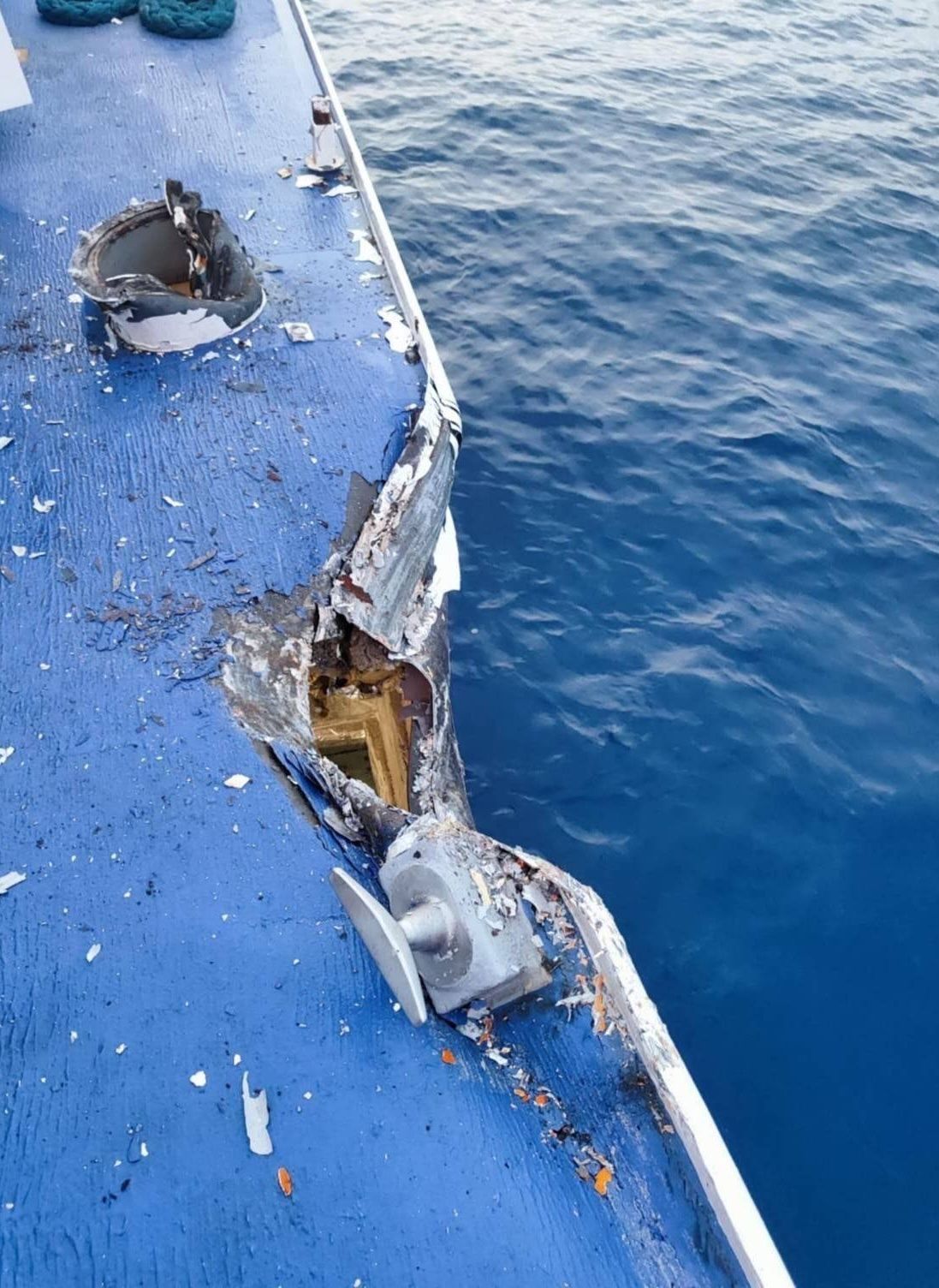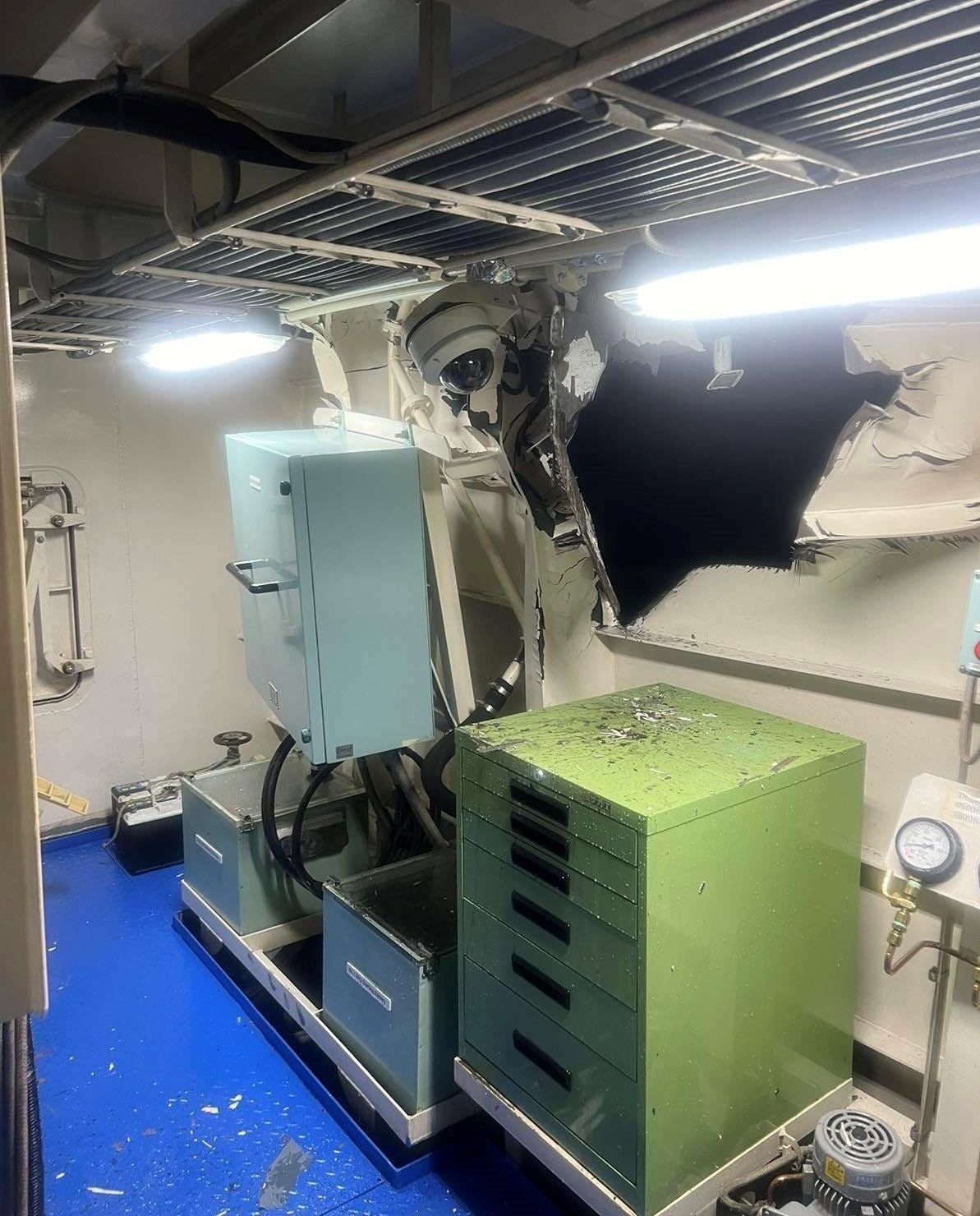PH, China trade barbs over collision of coast guard ships in Escoda Shoal

Tensions flared anew in the West Philippine Sea (WPS) after Philippine Coast Guard (PCG) and China Coast Guard (CCG) vessels collided in Escoda (Sabina) Shoal during a resupply mission on Monday, Aug. 19.
PCG ships BRP Bagacay (MRRV-4410) and BRP Cape Engaño (MRRV-4411) were en route to Patag (Flat) Island and Lawak (Nanshan) Island to bring supplies to troops guarding the Philippine-occupied features when they were subjected to “unlawful and aggressive maneuvers” by the CCG, according to the National Task Force for the West Philippine Sea (NTF-WPS).
Patag and Lawak Islands are two of the nine maritime features occupied by the Philippines in the Spratly Islands. The other features are Rizal Reef, Panata Island, Kota Island, Parola Island, Ayungin Shoal, Likas Island, and the largest of them -- Pagasa Island.
First to encounter aggressive maneuvers was BRP Cape Engaño as it was confronted by a CCG vessel with tail number “3104” while navigating 23.01 nautical miles southeast of Escoda Shoal around 3:24 a.m.
“This resulted in a collision with the starboard beam of the vessel, creating a hole on the deck with an approximate diameter of five inches,” the NTF-WPS said.
Meanwhile, BRP Bagacay was transiting at approximately 21.3 nautical miles southeast of Escoda Shoal around 3:40 a.m. when it was allegedly rammed twice on both her port and starboard sides by CCG vessel “21551”, which caused minor structural damage on the PCG ship.
Commo. Jay Tarriela, PCG spokesperson for WPS, said BRP Bagacay sustained damage in the auxiliary room on her port side near the port auxiliary engine, where a hole measuring 2.5 feet in length and three feet in width was inflicted by CCGV 21551.
Additionally, he said that when CCGV 21551 rammed BRP Bagacay for a second time, it caused damage to the latter’s thirteen stanchion posts and a dent measuring one foot on the starboard quarter was recorded.

On the other hand, BRP Cape Engaño sustained a hole with a diameter of 1.10 meters on her starboard quarter and damage to the engine exhaust with a diameter of 40 centimeters after colliding with CCGV 3104.
“Despite these incidents, both PCG vessels remain committed to and shall proceed with their mission of delivering essential supplies to personnel stationed on Patag and Lawak Islands,” the task force noted.
China's account
China, however, had a different version of the incident as it accused BRP Bagacay of “illegally intruding” into the waters near Xianbin Jiao or Reef, the name it calls Escoda Shoal, while “disregarding repeated warnings and navigation controls from the Chinese side.”
CCG spokesperson Gan Yu said the CCG “took control measures in accordance with the law and regulations.”
“The Philippine side has repeatedly provoked and caused disturbances, violating the temporary arrangement between China and the Philippines regarding the supply of necessities to the ship illegally ‘grounded’ on China’s Ren'ai Reef,” the CCG spokesperson said, referring to BRP Sierra Madre which is beached on Ayungin (Second Thomas) Shoal.
Last month, the Philippines and China reached a "provisionary arrangement" during resupply missions to BRP Sierra Madre in Ayungin Shoal to manage their conflict at sea.
“This seriously infringes on China's sovereignty and severely undermines regional peace and stability. We urge the Philippine side to immediately cease its infringement and provocation. Otherwise, the Philippine side will bear all the consequences arising from its actions,” Gan added.
Escoda Shoal
Escoda Shoal is located 75 nautical miles or about 140 kilometers from Palawan, within the country’s 200-nautical mile exclusive economic zone (EEZ).
It serves as a rendezvous point by the Armed Forces of the Philippines (AFP) whenever it conducts resupply mission to Ayungin Shoal.
On April 18, the PCG deployed its largest ship, BRP Teresa Magbanua, to Escoda Shoal to ward off illegal poachers and guard against suspected reclamation activities after authorities discovered an unusual dumping of dead and crushed corals on the shoal's sandbars.
Read: Why PCG’s biggest ship won’t leave Escoda Shoal
The NTF-WPS said the PCG “stands firm” in its responsibility to ensure the safety and security of the Philippines’ maritime domain while addressing any threats to national interests.
“The National Task Force for the West Philippine Sea urges restraint and adherence to the United Nations Convention on the Law of the Sea and other relevant international laws to prevent further escalations and ensure the safety of all vessels operating in the region,” it said.
The collision in Escoda Shoal is the latest flare up between Manila and Beijing after the two nations agreed to deescalate tension in disputed territories in the South China Sea through diplomatic talks in July.
Last Aug. 8, two Chinese air force multi-role fighters conducted dangerous maneuvers and dropped flares on a Philippine Air Force (PAF) aircraft during a routine patrol over Bajo de Masinloc (Scarborough or Panatag Shoal), raising the tension between the two countries once more.